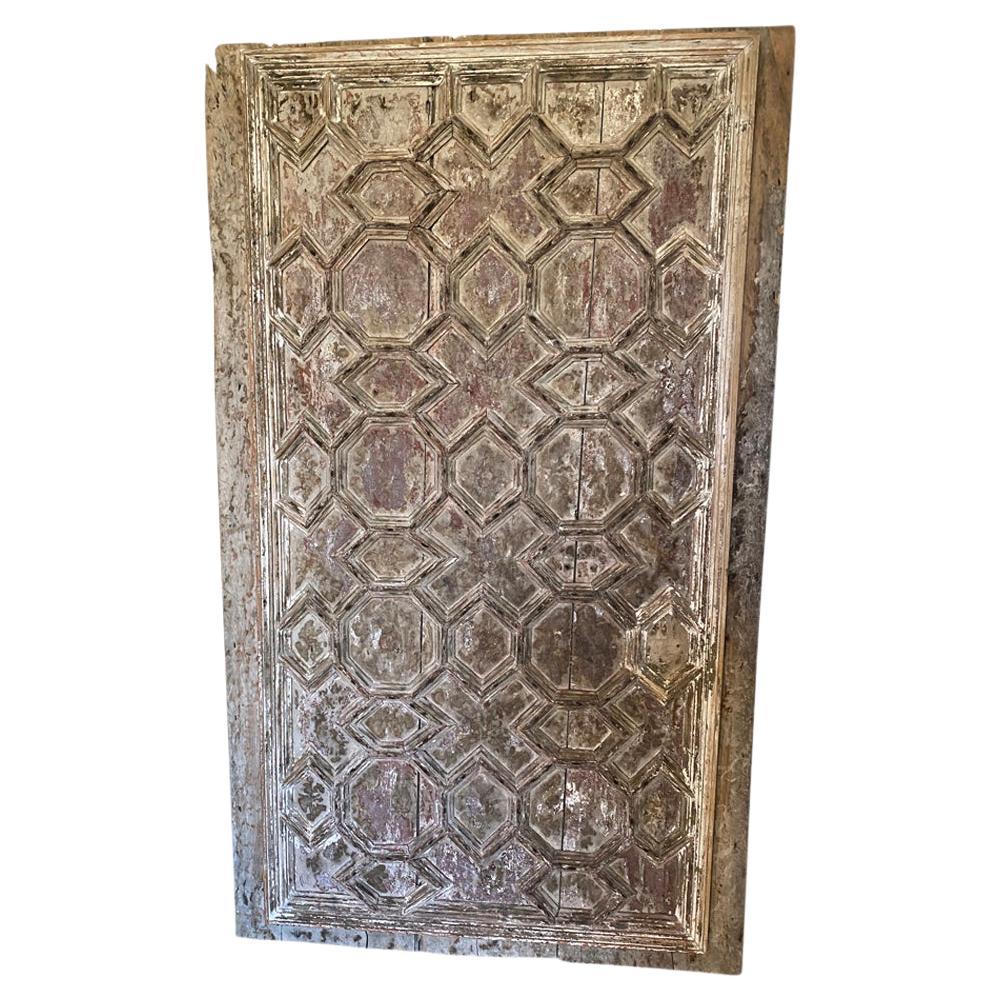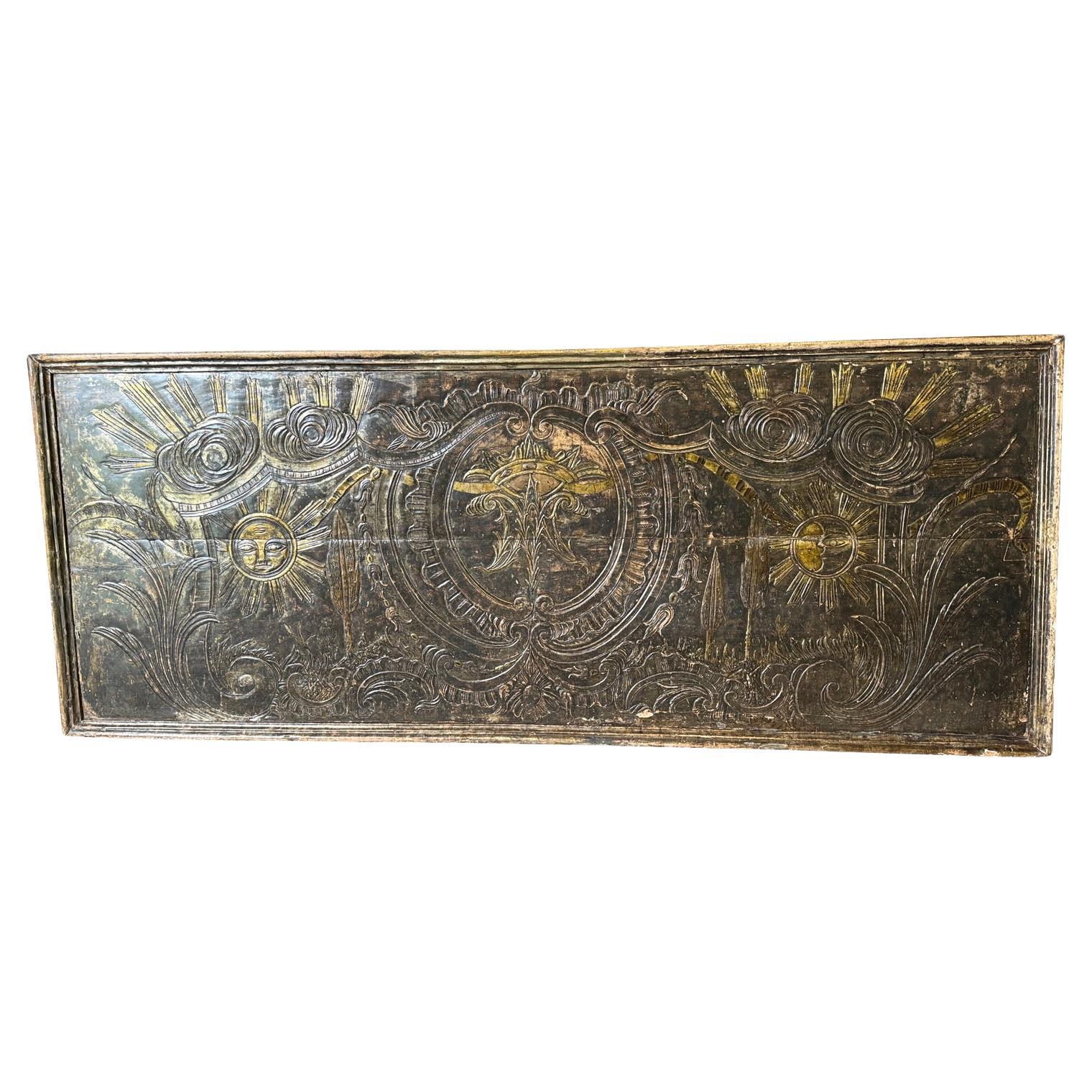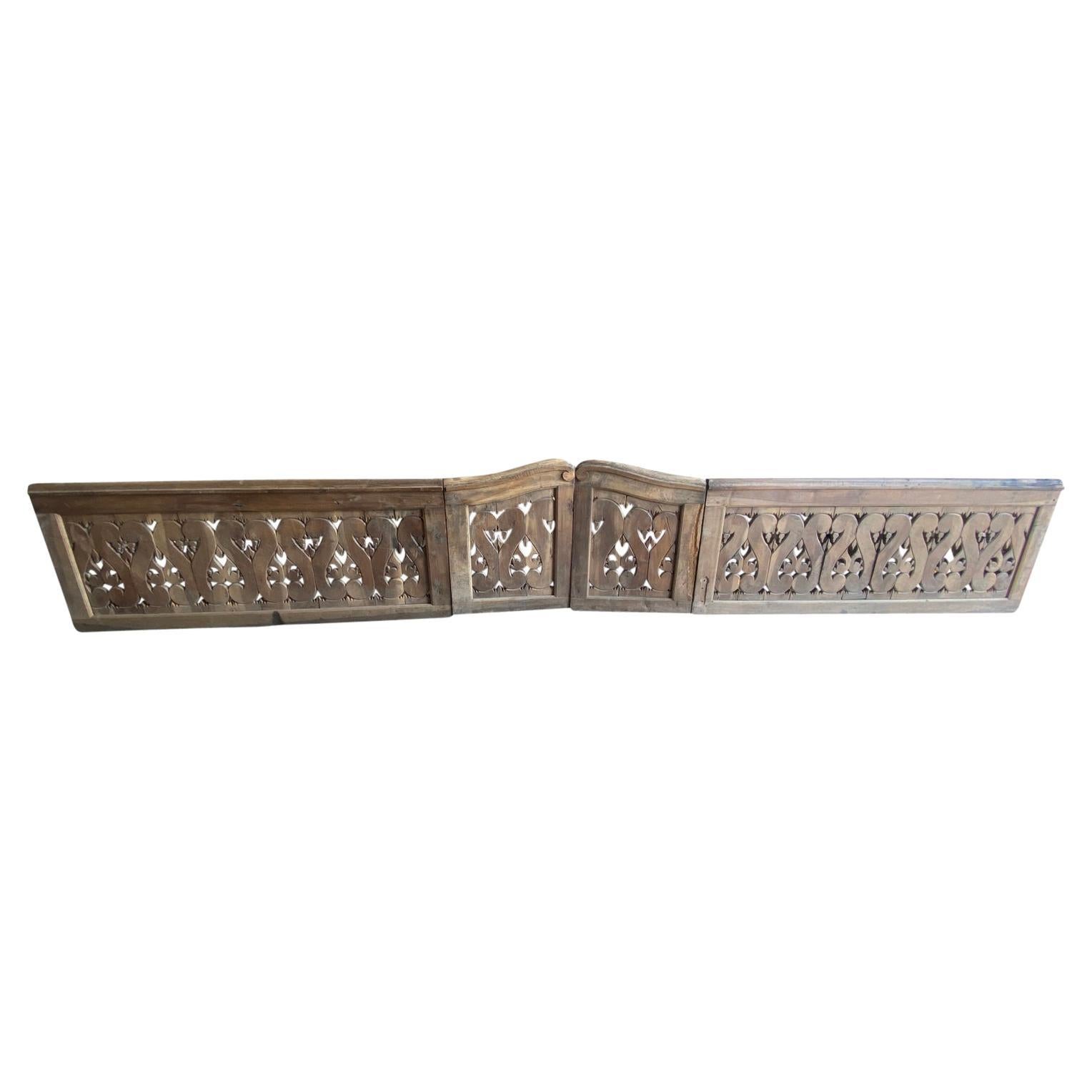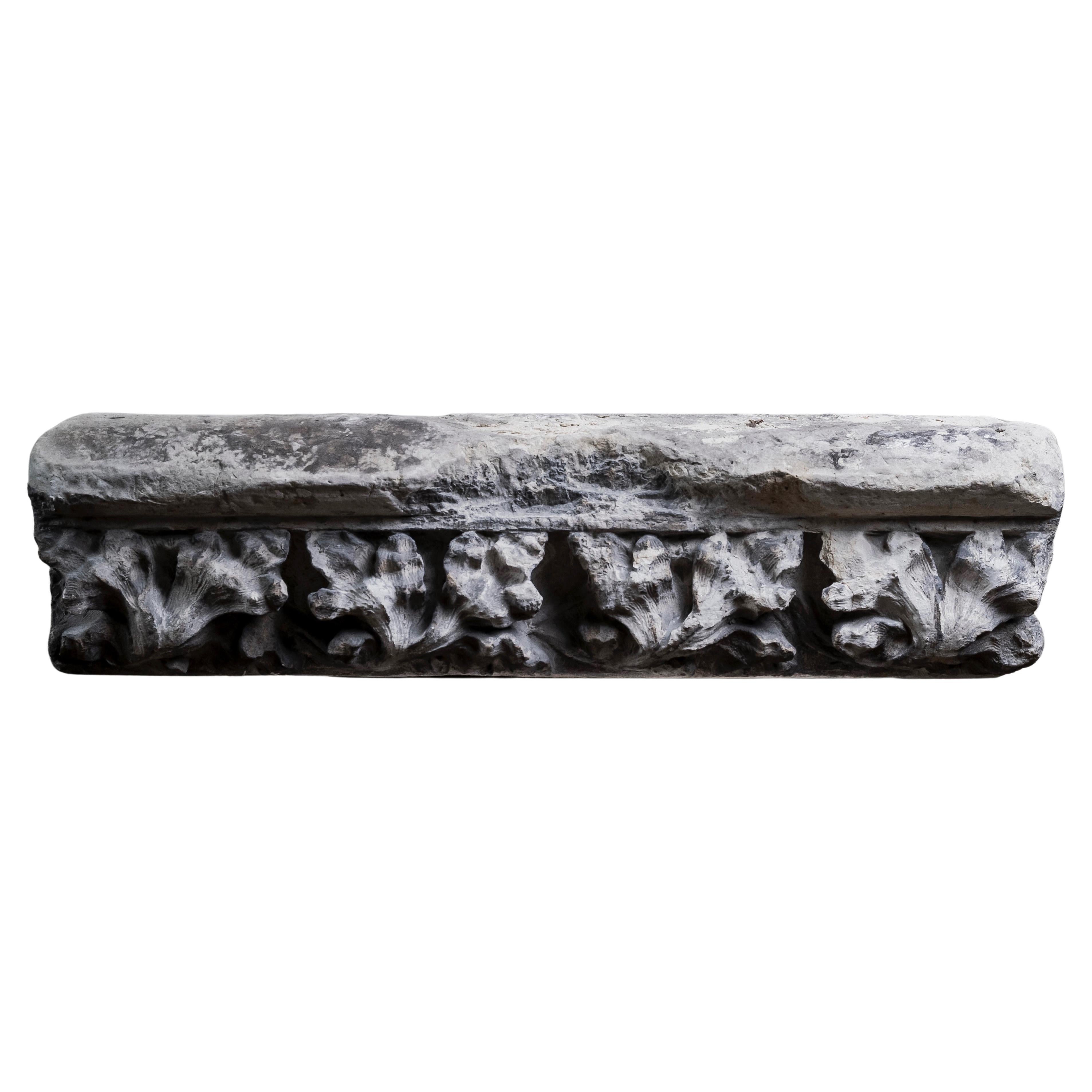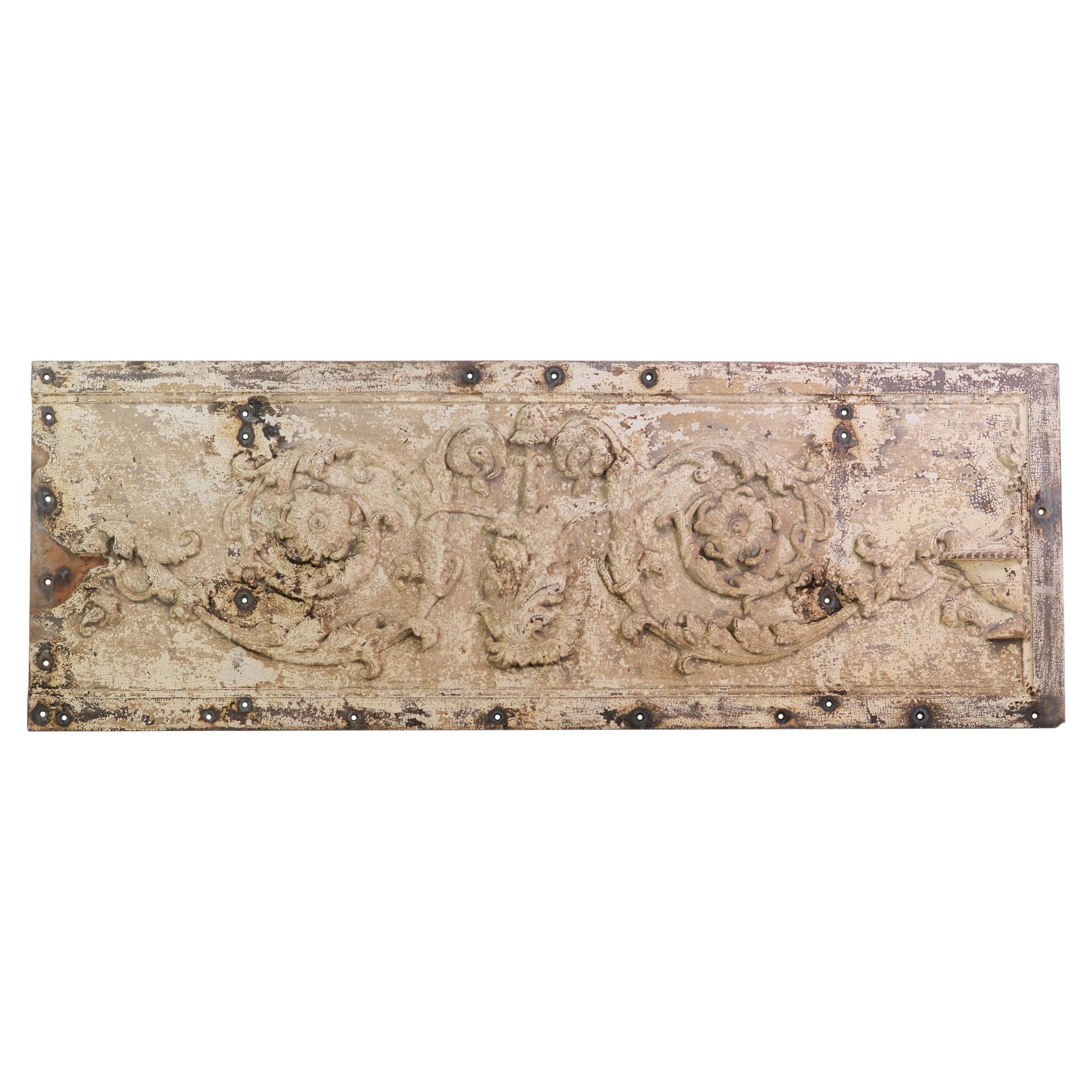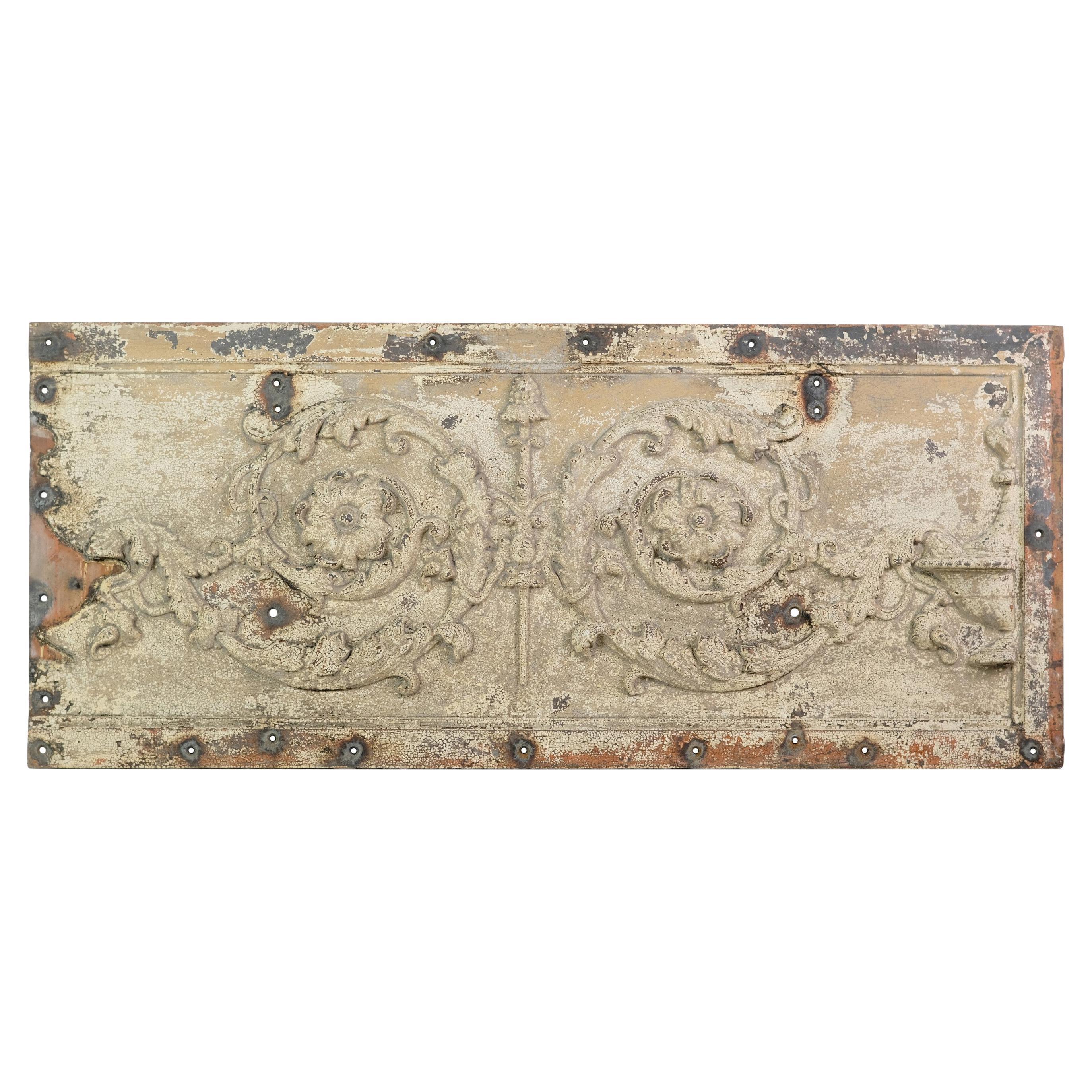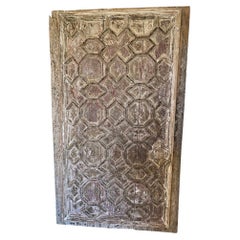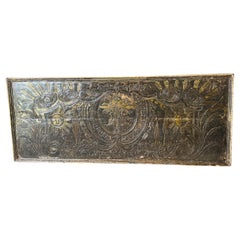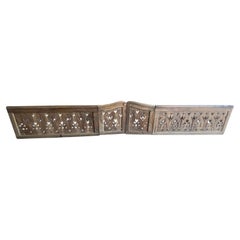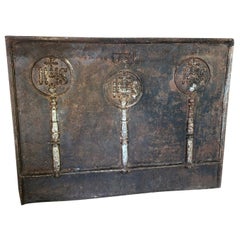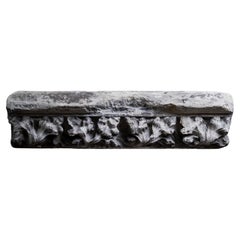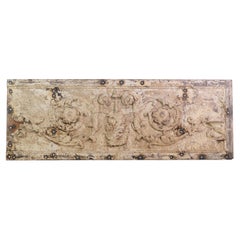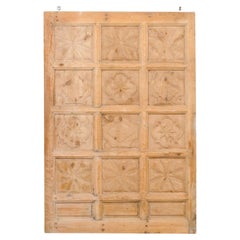Items Similar to French Late 16th Century Grand Scale Trunk Facade
Want more images or videos?
Request additional images or videos from the seller
1 of 14
French Late 16th Century Grand Scale Trunk Facade
$5,750
£4,356.72
€4,998.99
CA$8,091.18
A$8,894.43
CHF 4,674.50
MX$108,010.78
NOK 58,313.27
SEK 55,247.73
DKK 37,308.70
About the Item
A stunning, early 17th century trunk facade of grand scale. Dated 1621. Soundly constructed from richly stained oak with beautiful carvings of grapes on the vine, birds and other decorative motifs. A wonderful architectural element to be built in or used a headboard.
- Dimensions:Height: 48.75 in (123.83 cm)Width: 79.5 in (201.93 cm)Depth: 1.88 in (4.78 cm)
- Materials and Techniques:
- Place of Origin:
- Period:Early 17th Century
- Date of Manufacture:1621
- Condition:Repaired: We have treated this piece in our own warehouse outside of Nice, France. Some patching of holes/small missing bits was also done. Wear consistent with age and use.
- Seller Location:Round Top, TX
- Reference Number:Seller: FD-TRI10651stDibs: LU925620433052
About the Seller
5.0
Vetted Professional Seller
Every seller passes strict standards for authenticity and reliability
Established in 2008
1stDibs seller since 2012
656 sales on 1stDibs
Typical response time: 1 hour
- ShippingRetrieving quote...Shipping from: Round Top, TX
- Return Policy
Authenticity Guarantee
In the unlikely event there’s an issue with an item’s authenticity, contact us within 1 year for a full refund. DetailsMoney-Back Guarantee
If your item is not as described, is damaged in transit, or does not arrive, contact us within 7 days for a full refund. Details24-Hour Cancellation
You have a 24-hour grace period in which to reconsider your purchase, with no questions asked.Vetted Professional Sellers
Our world-class sellers must adhere to strict standards for service and quality, maintaining the integrity of our listings.Price-Match Guarantee
If you find that a seller listed the same item for a lower price elsewhere, we’ll match it.Trusted Global Delivery
Our best-in-class carrier network provides specialized shipping options worldwide, including custom delivery.More From This Seller
View AllFrench 16th Century Carved Panel
Located in Round Top, TX
A stunning 16th century carved panel from the Ariege region of France - Southwestern France. Beautifully sculpted from walnut. Much of the or...
Category
Antique 16th Century French Doors and Gates
Materials
Walnut
Spanish 18th Century Altar Facade
Located in Round Top, TX
A spectacular and exceptional 18th century Altar Facade from the Catalan region of Spain. Carved in wood and gilded with both gold and silver. To...
Category
Antique Early 18th Century Spanish Decorative Art
Materials
Wood
Italian 18th Century Ecclesiastical Barrier
Located in Round Top, TX
An exceptional 18th Century Ecclesiastical Barrier - Divider from Northern Italy. Wonderfully constructed from stunning walnut. Beautiful sculpted carving. Excellent graining and pat...
Category
Antique Mid-18th Century Italian Architectural Elements
Materials
Walnut
French 18th Century Fireback
Located in Round Top, TX
A wonderful early 18th century fireback from the South of France. A luxury item that served not only to adorn the fireplace, but to protect the backwall of the fireplace and to radia...
Category
Antique Early 18th Century French Fireplace Tools and Chimney Pots
Materials
Iron
Italian Mid-18th Century Entry Door
Located in Round Top, TX
A very handsome mid-18th century entry door from Northern Italy. Wonderfully constructed from solid chestnut with stunning carving details and iron ...
Category
Antique Mid-18th Century Italian Doors and Gates
Materials
Chestnut
Exceptional Set of Spanish Late 16th-Early 17th Century Iron Gates
Located in Round Top, TX
An exceptional and tremendous set of late 16th-early 17th century entry gates in hand forged iron. Exquisite craftsmanship. One segment measures 82 1/2" long. The other segment measu...
Category
Antique Early 17th Century Spanish Doors and Gates
Materials
Iron
You May Also Like
Large Medieval carved frieze - France, 14th-15th century
Located in Bruxelles, BE
Gothic Limestone frieze decorated with curly foliage
North of France, 14th-15th century
59,8 x 15,6x 22 cm
This French Gothic limestone frieze, adorned with curling foliage, stands ...
Category
Antique 15th Century and Earlier French Medieval Architectural Elements
Materials
Limestone
$2,584 Sale Price
20% Off
Cast Iron Ornate Frieze NYC Building Cornice Foliage Details
Located in New York, NY
Circa 1900, cast iron frieze with foliage details. This was originally part of a NYC building cornice before it was reclaimed. It has a natural patina...
Category
Early 20th Century American Victorian Architectural Elements
Materials
Iron
$2,400 Sale Price
20% Off
Circa 1900 Cast Iron Ornate Foliate Frieze NYC Building
Located in New York, NY
This antique cast iron frieze was reclaimed from the cornice of a New York City high rise building. It is ornate with foliated decorative patterns thr...
Category
Antique Early 19th Century American Victorian Architectural Elements
Materials
Iron
$2,400 Sale Price
20% Off
A Large-Sized Spanish Wooden Door w/Decoratively Carved Panels
Located in Atlanta, GA
A Spanish large-size, decoratively-carved, raised-panel wooden door. This vintage wood door from Spain is adorn with 15 raised panels, with three ro...
Category
20th Century Spanish Doors and Gates
Materials
Wood
18th Century Italian Rococo Carved Frieze Wall Panel - Antique Oakwood Door
Located in West Palm Beach, FL
An antique Italian frieze panel with flowers, vines and leaves, made of hand crafted Oakwood in good condition. The vertical door features two hand crafted round metal door pulls...
Category
Antique Late 18th Century Italian Rococo Doors and Gates
Materials
Oak
19th Century Antique Carved Wood House Overdoor Architectural Pediment
Located in Stamford, CT
Late 19th century antique architectural house overdoor carved wood pediment. The pediment came from an old Victorian home in Buffalo NY. and has been st...
Category
Antique Late 19th Century American Architectural Elements
Materials
Wood
$1,440 Sale Price
20% Off
More Ways To Browse
French Scales
French Antique Scales
16th Century French Furniture
Antique Oak Trunk
16th Century Oak
Antique Building Facade
Wrought Iron Panel
Architectural Finial
Architectural Mold
Medieval Stone
Relief Tiles
Door Pull Handles
Antique Architectural Wood Panels
Terracotta Architecture
Architectural Frieze
Building Fragment
Plaster Architecture
Antique Overdoor
